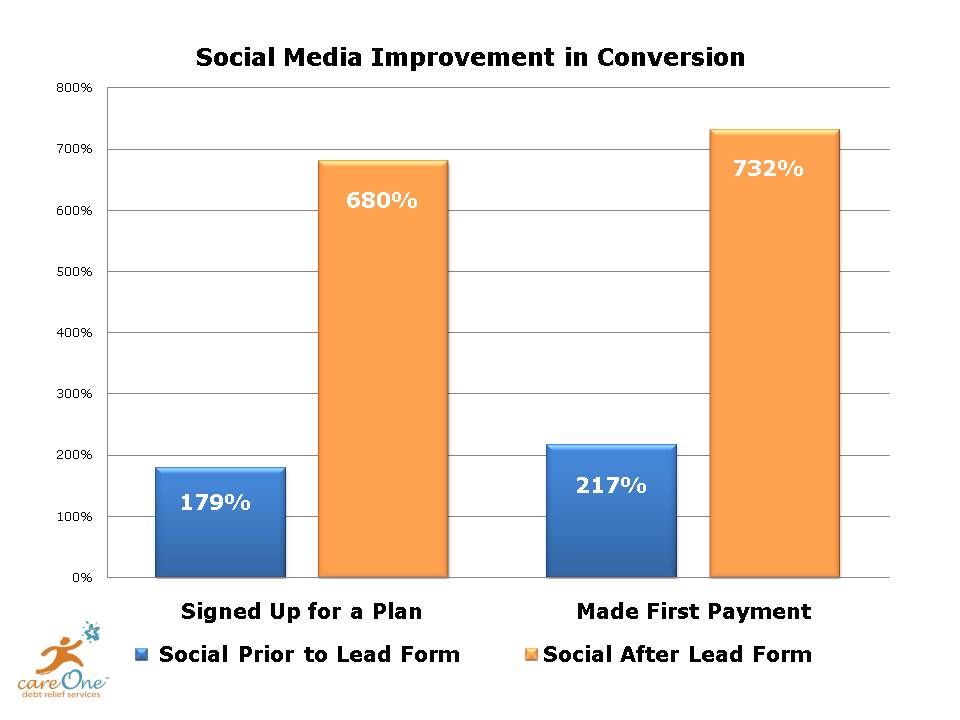 Do you think social media measurement is only about return on investment (ROI)?
Do you think social media measurement is only about return on investment (ROI)?
Are you struggling to find measurements that are meaningful to your organization? Do you feel like you're searching for a needle in a haystack of metrics?
Here are 8 useful metrics that you may not be measuring, but should be.
#1: Conversion Rates
Everyone wants to measure the volume of leads generated to get to the bottom-line ROI of social media efforts. But don't forget about the value of the conversion rate! While the volume may not be there yet, the propensity to convert may be staring you right in the face.
You'll need to have a mechanism in place to know when a lead comes from social media. Most people use the combination of a URL shortener and some form of a “cookie” to attach a campaign to a lead. Hootsuite has integrated Google Analytics into their URL shortener for a seamless transition to success metrics in analytics, while some companies are using proprietary shorteners and others are still trying to figure out how to do it.
One of the most important steps in understanding where your lead came from is to know when someone clicks on a social media link and then converts. The most reliable way to do this is to place a “cookie” on the user's machine with the campaign name for the social media channel that generated the click. Then use your campaign reporting to track the number of leads and conversions you've generated.
The number will likely be fairly low in the beginning but by looking at conversions divided by leads, you can get your conversion rate for social media leads. Compare this against other marketing channels to see if it's higher or lower.
# 2: The Control Group
Some of the greatest metrics I've brought forward in my company really didn't look that impressive when I first got them. The volume of leads generated was pretty low when compared to our other marketing channels.
However, when I compared them against a group of people that had not interacted with social media, I found some amazing stats that not only got my executive team excited about social media, it also showed that social media has a huge impact on our ability to convert leads. This certainly makes it easier to justify budget dollars to integrate social media into the sales process.
To add a control group, run the same metrics you normally run against a group that has never interacted with social media and compare them. Look for how social media compares in areas like lead conversion rates, retention rates and costs.

#3: Growth Rate
While you're building volume, measure the growth rate over time. Being able to show that volume is growing at a healthy rate helps prove that your efforts are generating an impact. The reality is that it takes time to build a sustainable social media channel; thus, setting proper expectations is very important.
#4: Marketing Campaign History
It's really important to look at how your company reports on “cookies” related to a sale. After doing some digging, I found that my company was attributing the credit for the sale to the campaign that was the first cookie the prospect had received. We can now report on the originating campaign, the campaigns responded to in between, and the converting campaign.


Discover Proven Marketing Strategies and Tips
Want to go even deeper with your marketing? Check out the Social Media Marketing Podcast! Publishing weekly since 2012, the Social Media Marketing Podcast helps you navigate the constantly changing marketing jungle, with expert interviews from marketing pros.
But don’t let the name fool you. This show is about a lot more than just social media marketing. With over 600 episodes and millions of downloads each year, this show has been a trusted source for marketers for well over a decade.
This helps us know all of the drivers to the sale and appropriately adjust costs related to the sale to get closer to a true ROI as well as look for that magic mix. Even if your sales process isn't online, you need to make sure your CRM system allows for tracking to marketing efforts through the entire sales cycle and your teams are appropriately trained to track it.
Get World-Class Marketing Training — All Year Long!
Are you facing doubt, uncertainty, or overwhelm? The Social Media Marketing Society can help.
Each month, you’ll receive training from trusted marketing experts, covering everything from AI to organic social marketing. When you join, you’ll also get immediate access to:
- A library of 100+ marketing trainings
- A community of like-minded marketers
- Monthly online community meetups
- Relevant news and trends updates
#5 Customer Acquisition Costs
Everyone is touting how “cheap” social media is, though many of us have realized that is somewhat of a fallacy. However, it is cheaper than many other traditional channels, so measure the full campaign history (as stated in #2) and then assign the cost per conversion and compare it against your control group.
Here are two examples of how this can happen:
- A person clicks on a link in one of your tweets and goes to your site and converts into a new customer.
- A person clicks on a paid advertisement on Google and doesn't convert. Then later clicks on a link in one of your tweets and goes to your site and converts to a new customer.
Depending on your business model and typical advertising expense, in the first example, the cost to generate that customer could be less than a standard customer who comes through paid advertising.
In the second example, the cost will be higher than the standard customer who comes only through paid advertising, BUT even if it's slightly higher for those who responded to more than one channel for lead generation, the incremental cost of social media will likely be less than trying to replace the unconverted lead with a new one.
#6: Retention Rates
Right behind the ability to convert a customer is the ability to keep a customer. Compare the inclination of new customers to stay customers with and without social media interaction. The theory is that those participating in social media are more engaged and likely retain better.
In order to do this you'll need to keep all the leads converted in #1 and track them over time. If you have an ongoing fee, measure how long they stay a customer. If you're more of a onetime sell, measure if they come back and buy something else and how often they do. Then compare this against the control group of those who didn't interact with social media and see if there are any improvements worth noting.
#7: Customer Saves
Many teams are using social media to help customers online and this often includes managing complaints. Measure how many times your team saves a customer from cancelling, switching or returning your product/service.
#8: Cross-Sells
Are social media customers more or less likely to buy additional services? How much revenue per customer was generated from social media compared to non-social media customers? How much revenue was generated from additional purchases and/or add-on products for social media customers? Compare this to your control group and you'll be able to tell if social media has an impact on up-selling or cross-selling.
This is certainly not a complete list of metrics, but it gives an overview of some of the most commonly missed measurements that contribute to showing social media's value to your organization and/or clients.
What would you add to the list? Please let us know what you think in the comments box below.
Related Articles:
- How to Measure Social Media's Impact on Customer Retention
- How to Measure Social Media Return on Investment for the Complex Sale
- 4 Ways to Measure Social Media and Its Impact on your Brand
- How to Measure Social Media Marketing Performance
Photo source: Flickr
Attention Agency Owners, Brand Marketers, and Consultants

Introducing the Marketing Agency Show–our newest podcast designed to explore the struggles of agency marketers.
Join show host and agency owner, Brooke Sellas, as she interviews agency marketers and digs deep into their biggest challenges. Explore topics like navigating rough economic times, leveraging AI, service diversification, client acquisition, and much more.
Just pull up your favorite podcast app, search for Marketing Agency Show and start listening. Or click the button below for more information.

